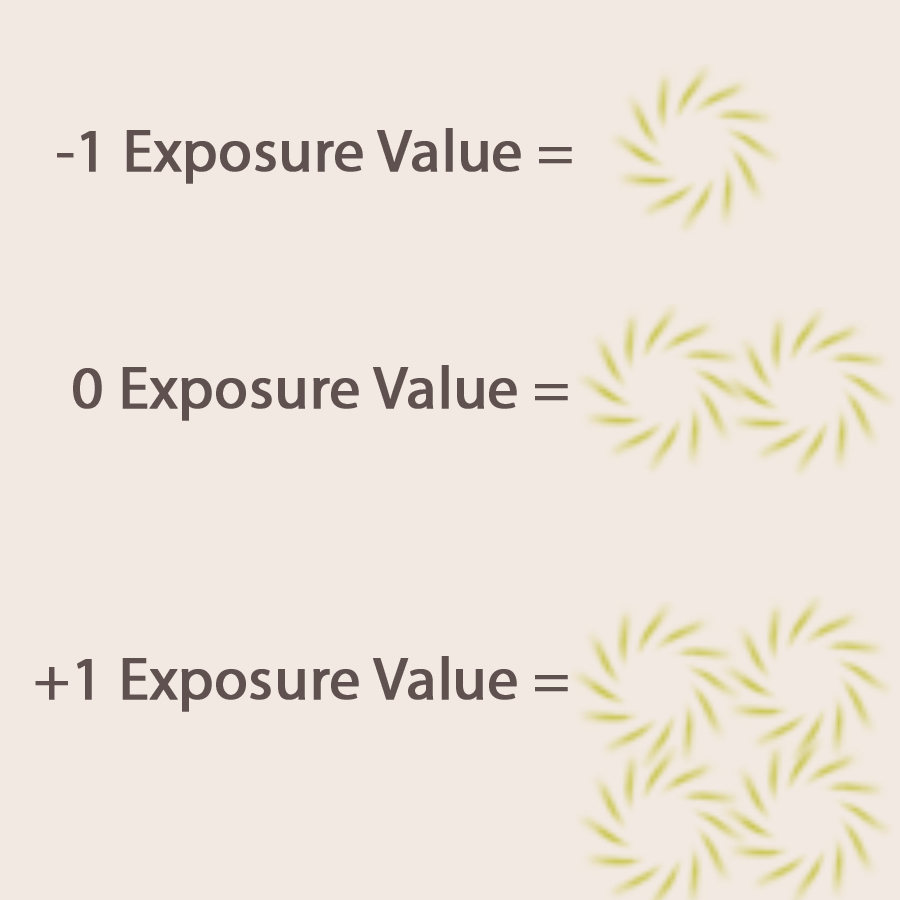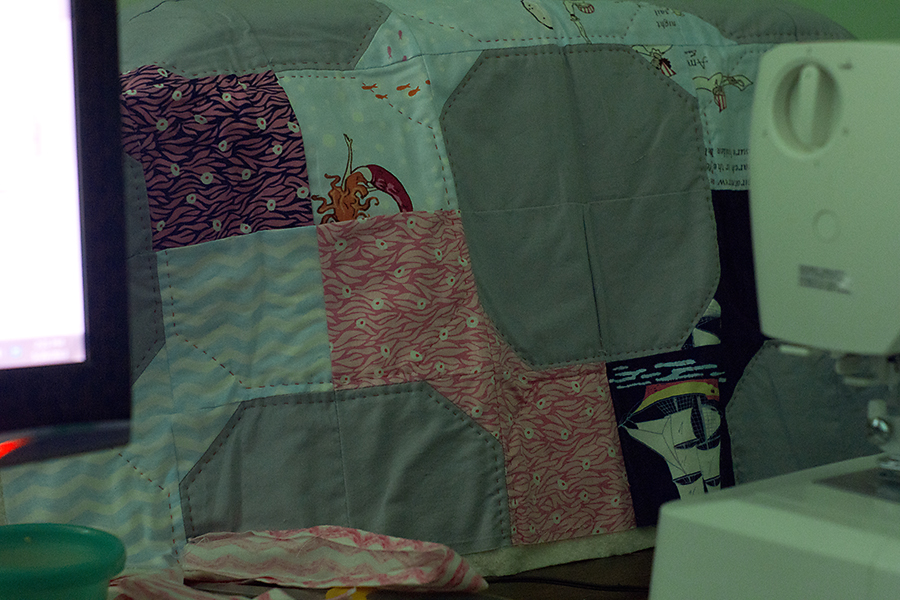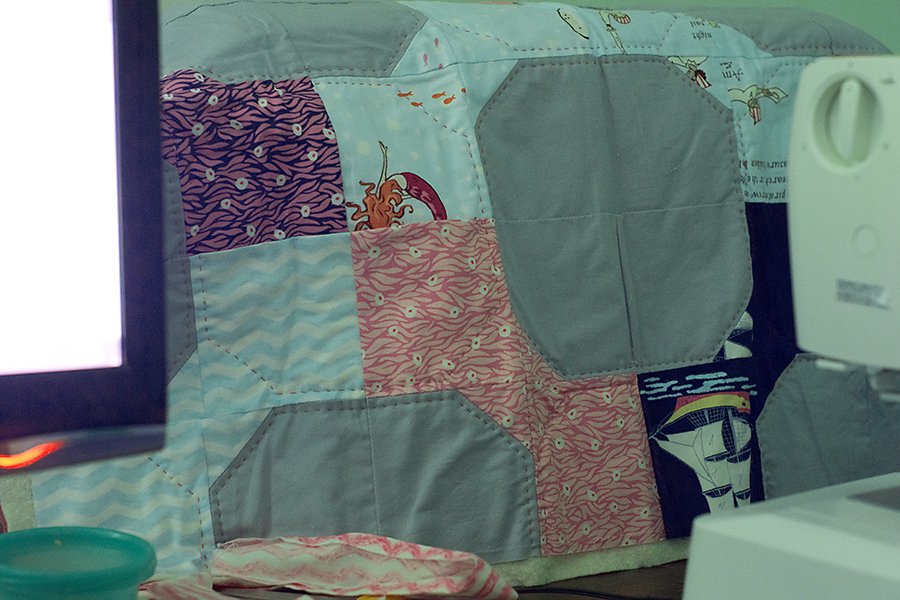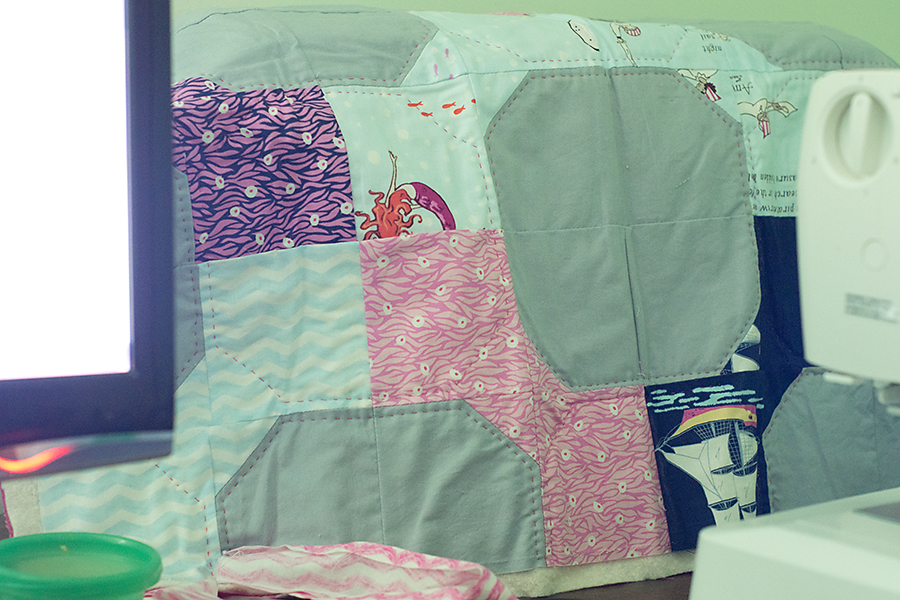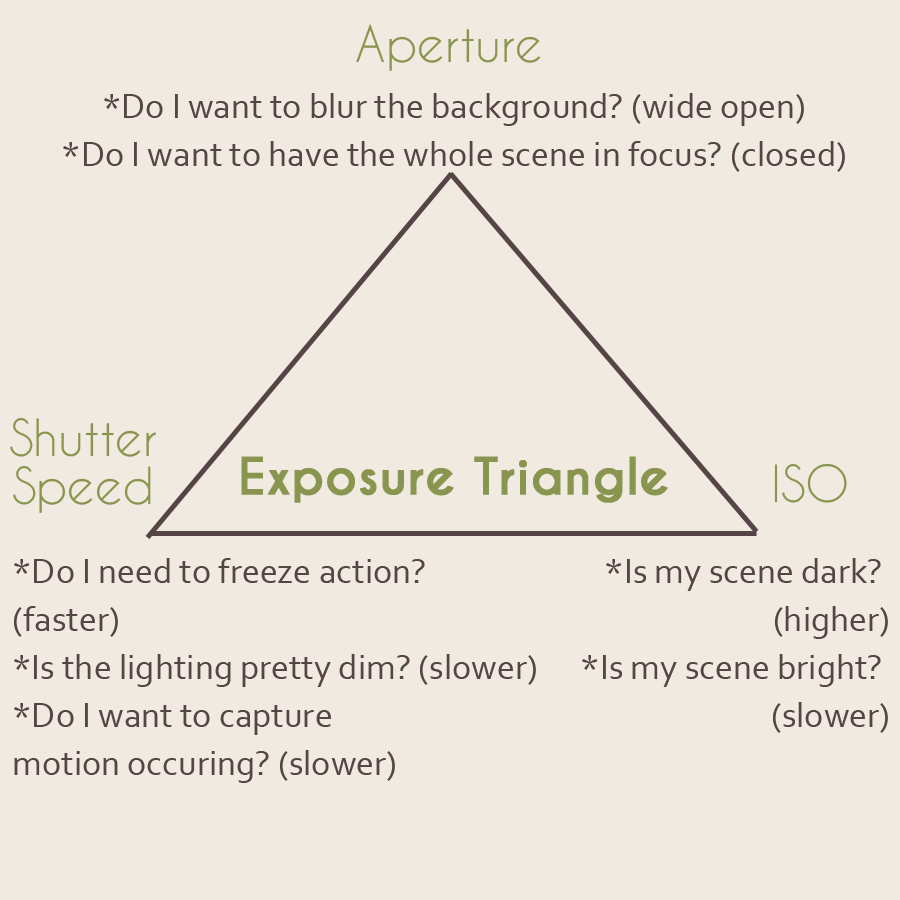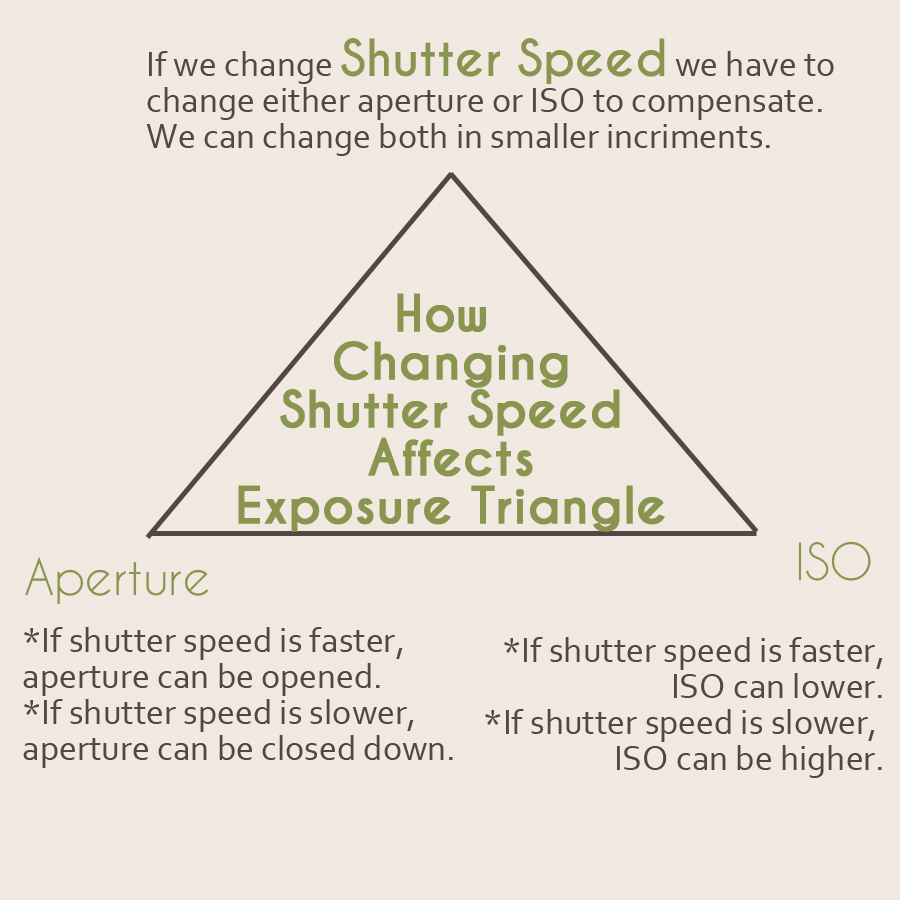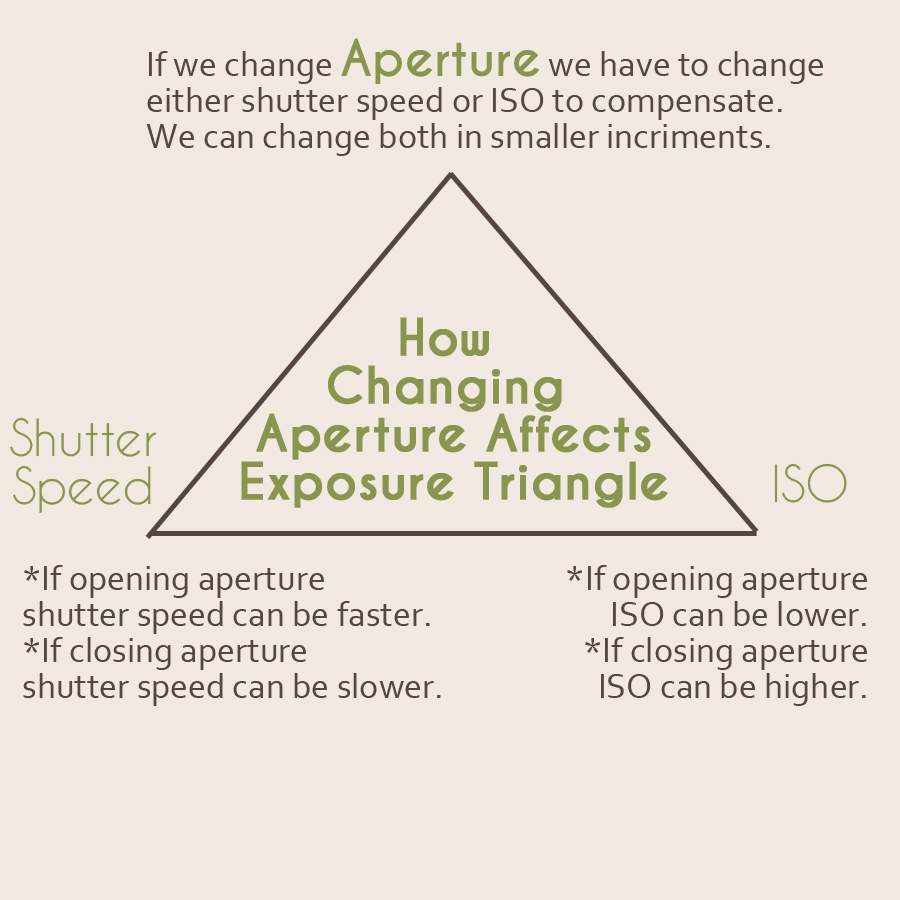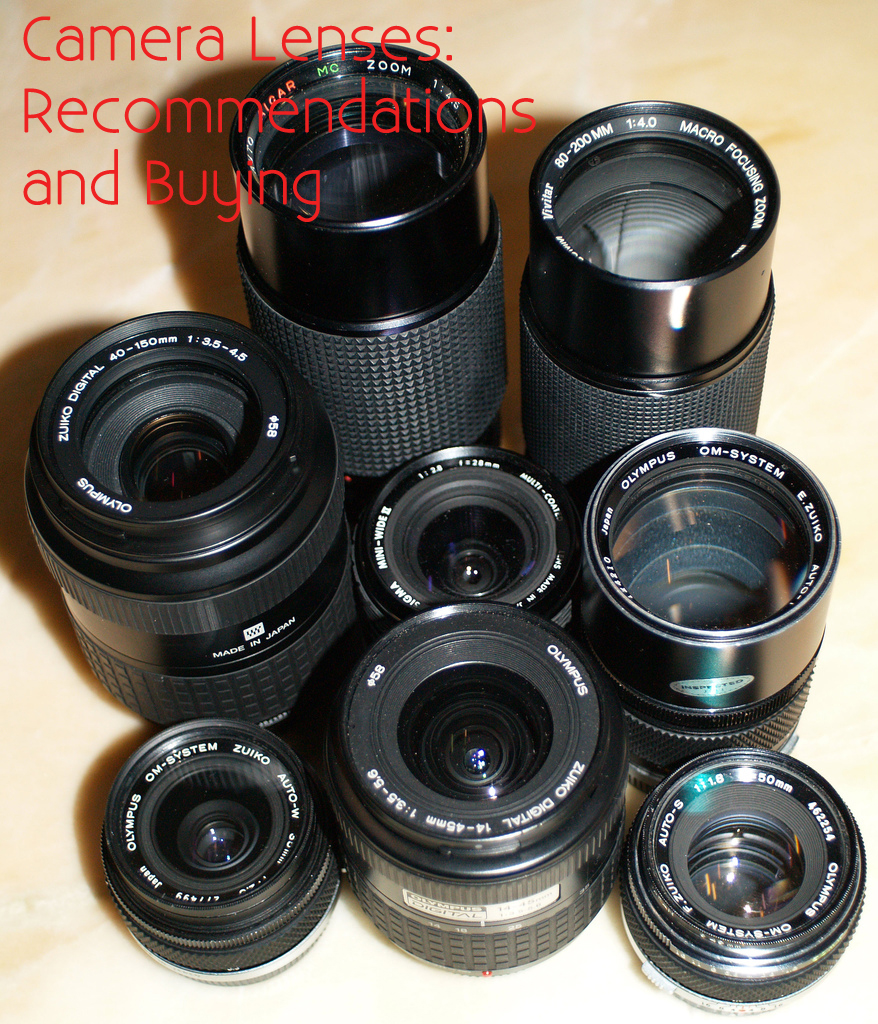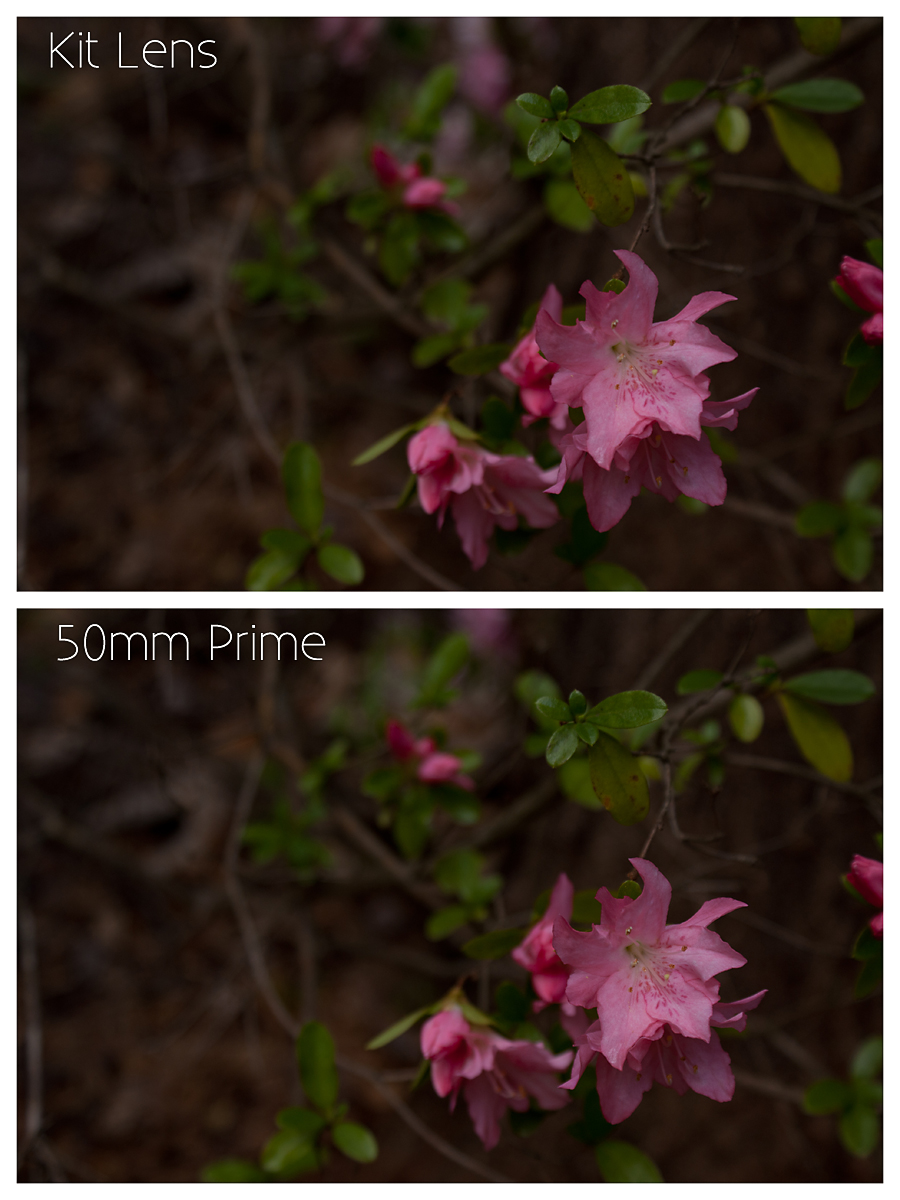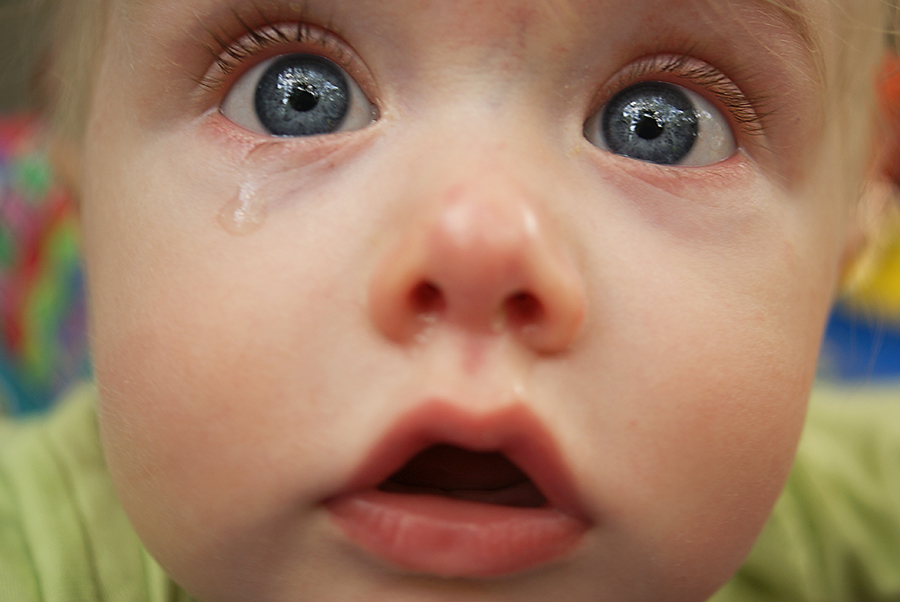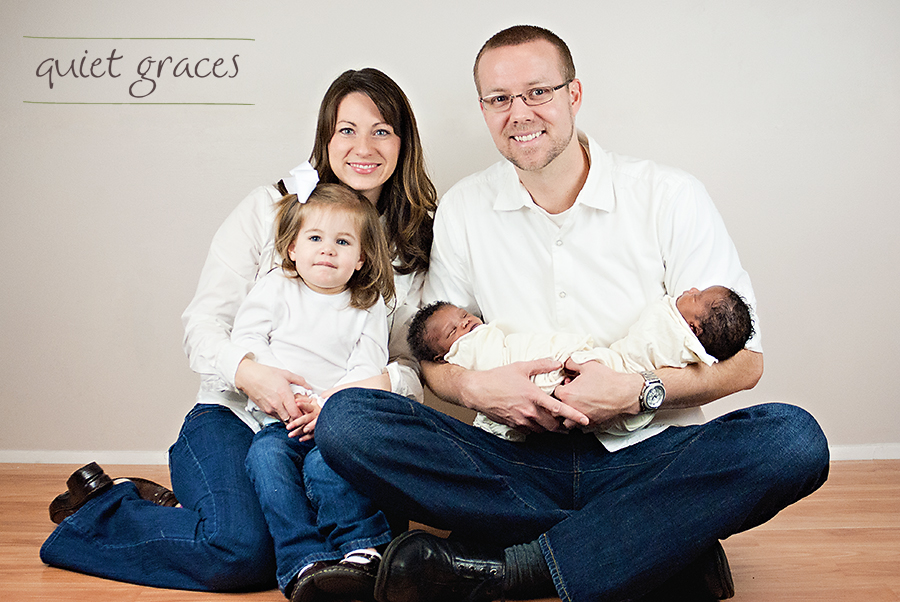18
2013Full Disclosure: If you’re like me and managed to completely fail an open book statistics test in college, then this post might be extremely boring to you. I’m going to try to use the simplest language possible to help us all out while trying to understand this necessary part of manually setting your exposure, but bear with me through the confusion. It may be a long number filled ride. However, I promise you’ll have the knowledge to learn to precisely change exposure when you’re finished reading… even if you’ll need to practice for awhile longer 🙂
What is a Photography Exposure Stop?
A stop is a measurement of the relative brightness of the light used when setting exposure.
Super helpful, huh? Yeah, that’s as plain as I can define it in the English language. So this is where we start diving into the math portion so it’ll all make sense.
We’ve talked about stops just a little bit when we explored exposure value/compensation in this post on Program Mode. Remember how the assignment was to shoot a few things at -1, -2/3, -1/3, 0, +1/3, +2/3, +1 to decide which exposure we liked best in certain lighting situations?
Those -1, 0, +1 numbers denote stops (and the thirds in between denote 1/3 of a stop).
This is where the whole relative brightness thing comes in: every time we go up a whole stop relative to the one before, we’re making an exposure twice as bright. Every time we go down a whole stop, we’re making an exposure half as bright. All of this is relative to our reference point, which in this example is the 0 on our exposure meter.
So -1 stop is one half as bright as 0 stop. +1 stop is twice as bright as 0 stop. +1 stop is four times as bright as -1 stop. So on and so forth.
Let’s make this visual.
Exposure Stops in Relation to the Whole Exposure
So lets say you’re sitting at your desk typing this post and you snap a photo of your workspace, because you really don’t want to go anywhere to take a fancy photo for this post (yet).
You shoot at -1.
Meh. Too Dark.
Then you bump your whole exposure to 0 on the little exposure value scale.
Not too bad and twice as bright as your previous exposure.
But just for fun you’ll give +1 a try.
Whoa! Computer screen and sewing machine corner whites are blown out because your exposure is four times as bright as your initial exposure.
You hanging with me here so far? Because we’re about to further explore the definition of stops. 
(Please don’t hesitate in the comments to let me know where the math loses you. I’ll try to explain again where it gets foggy.)
11
2013If you’ve been shooting in Program Mode for the last month+, the good news is that the jump to Manual Mode isn’t going to be so scary.
You’ve already been thinking the following things that you’ll also be asking in Manual Mode:
- Do I need to focus more on my Aperture or my Shutter Speed for this image?
- Do I need my ISO to be very high to compensate for lack of light or can I leave it low because it’s bright and sunny?
- Is this a very bright scene where I need to lower my exposure compensation to capture the brightness that I want?
- Is this a very dark scene where I will need to increase my exposure compensation to capture the brightness I want?
- What is the most important thing in this image that I should meter from?
So how does Program Mode Differ from Manual Mode?
Program Mode is still an automatic mode. The camera is still metering for the image and setting the exposures for you even if you have engaged exposure compensation. That’s not necessarily a bad thing. Program Mode is beautiful for weddings and parties where you can’t miss the shot and can set it each time your light changes. It’s also wonderful for a studio situation where you know your light and backdrop well and want to spend more time posing. And it’s also a wonderful bridge between the Auto Modes and Manual mode precisely because it makes you think like you’re in Manual Mode. And, honestly, if you shoot in program mode for the rest of your camera using life, you’re still way ahead of the average camera user.
So you might be asking, why switch to Manual Mode at all?
That’s a good question. And it’s not one that I can really answer. If you end up choosing program mode as your primary mode, then I won’t judge you (sometimes I choose Program, too). Because honestly, you’ll still be making all the creative decisions just as if you were shooting manual mode, your camera is simply filling in all the blanks.
However, I think the real benefit of shooting manual mode (even if only for a season) is that the photographer is forced to think about every relationship in the Exposure Triangle and decide whether changing one part will create the image they want. So I’m going to encourage all of you to give this a try for a few weeks.
Now let me warn you, switching from Program to Manual is going to be frustrating mainly because it takes so much more thinking and adjusting time before you press the shutter release. Where in Program mode you could adjust one thing (ISO, Aperture, Shutter Speed, or your Exposure Compensation) and let the camera do the rest, in Manual mode you’ll be doing all of that adjusting with your own fingers before each shot or series of shots. So I suggest that we practice the first week of manual mode with still life or landscapes so we’re not kicking ourselves for missing “the shot” with moving subjects.
What is the Exposure Triangle?
The Exposure Triangle is the key concept for shooting in Manual Mode.
If you’ve stuck with this class for the first half so far than you already know all of the parts of the Exposure Triangle: ISO, Shutter Speed, and Aperture. However, because we’ve let the camera pick at least one of the triangle points even shooting in Program Mode, we haven’t had really had to think about all of the ramifications of changing one point.
So first let’s review the three points on the Exposure Triangle and the key questions we need to ask ourselves before changing one. And (surprise!) my graphic skills are slightly better this time around. Look at how much you guys are growing me!
Relationship of the Three Points on the Exposure Triangle
Once we have the perfect exposure set, if we change one of the points of the Exposure Triangle we will have to change at least one other point to compensate. For example, if my current perfect exposure for the scene is 1/60 second, f/5.6, ISO 100 and I want to photograph a running toddler, I should quickly realize that 1/60 is not fast enough to freeze the toddler’s motion. So I’ll change shutter speed to at least 1/100 of a second to freeze the motion. But once I’ve changed that, I’m either going to need to adjust the aperture or the ISO an equal number of stops or I’ll have to adjust both aperture and ISO to a number of stops that together equal the number of stops that I changed the shutter speed.
Confusing, huh? We’ll talk about specific stops and the more mathematical side of the Exposure Triangle next week, but this week I want to give you an idea of how changing one point on the exposure triangle is going to affect the other points on the triangle. The following is a series of graphics to help us understand these changes.
Hopefully those graphics are helpful as we learn Manual Mode. If you’d like to print a copy of these graphics, here is an Exposure Triangle Printable.
So How Do I use Manual Mode?
Whew! So that was a lot of theoretical head knowledge up there. And we’re really just starting to think about it rather than truly diving into what it means. So really this section is your challenge to read your camera manual! You’re going to have to pick up your camera manual and figure out what your adjustment dial (or dials) will do once you switch it over to manual mode. For instance, the dial on the front of my camera changes shutter speed and the one on the back of my camera changes aperture in manual mode. If I hold down the AEL button, then I can change both aperture and shutter speed together with one dial and the camera will calculate the stops for me!
Now for your pretty easy assignment.
Manual Mode Assignment #1
- Read that Camera Manual and figure out the mechanics of Manual Mode (how to use adjustment dials, where your exposure scale will appear, which button to hold down to adjust aperture and shutter speed at the same time.
- Go out and practice manipulating all points of the exposure triangle on 1-3 images.
- Here’s a rough process for these images: Set the ISO for your scene then fiddle with shutter speed/aperture according to your composition needs until your exposure scale shows that you’ve set the correct exposure for your metering mode. Take the shot. Decide whether you like the exposure on 0 and if not fiddle with moving the exposure up or down to +1 or -1.
- Don’t expect miracles this week. Your goal should simply be to understand the mechanics of shooting in Manual Mode.
- If you want to just shift your camera back to Program or one of the other Auto Modes, resist (unless you’re shooting something important like a birthday or other irreplaceable memories). Keep practicing.
That’s it for this week. If you have any specific questions about Manual Mode, get those written down in the comment section so I can address them in upcoming posts. This week is meant to be sort of a rough introduction and the assignment goes along with that. Next week we’ll cover the mathematics to get a better feel for the relationships within the exposure triangle. Don’t worry… I’m not very mathematical so it’ll be pretty easy to understand. 🙂
04
2013There are so many choices when it comes to buying lenses that it’s almost overwhelming.
We’ve studied the difference between prime (fixed focal length) and zoom lens as well as the effects that focal lengths have on images. Hopefully, you have a sense for which focal lengths compliment your style/subjects as well as whether you crave zoom or prime lenses. In this post, we’ll learn about what additional factors you should consider before purchasing a new lens.
Why Your Lens is More Important than your Camera
As I’ve mentioned before, I’ve been using a SonyAlpha 200. The camera itself is a terrible professional camera. There is noise like crazy above ISO 400, the megapixels are only slightly better than a high-end Android or Iphone camera, and there are a ton of other limitations with this beginner grade camera body.
Yet, I’m shooting pro quality images on a camera most pros would consider just above the level of junk. How? I’m using quality prime (fixed focal length) lenses. We’ve already talked about how prime lenses are sharper than even the best zoom lenses and that’s a huge part of my success with this camera body. My lenses were all bought used or “open box”, yet each of them is far better quality than any ‘kit’ lens that might come with your camera.
So let me dust off my kit zoom lens (f/3.2-5.6 18-70mm zoom) and shoot the same scene with it and both my primes all other settings the same and let you compare the results.
Get real close to your monitor and look at the details in these two images. Especially with that top set of leaves and the speckling on the flower petals, do you see how the bottom image has more defined borders around these small parts? Do you see the difference between the veining in those top leaves?
Let’s explore some things you want to see in your lenses to make your investment count before you consider purchasing a new one.
Why Purchase a Fast Lens?
A fast lens is one who has a very wide aperture. Remember how wider apertures let in more light? When wide open, these lenses can capture an image with a much faster shutter speed than a lens with a wide open aperture of f/4 or so.
Aperture ranges from 1.2-2.8 are generally fast lenses. On a prime lens f/1.2 to f/1.8 is pretty standard as the fastest. On a zoom lens, usually the fastest you can get is f/2.8.
Fast lenses (especially the zooms) cost a fair bit more than their slower counter parts. Why is it worth it to spend more? Because creating an aperture that opens as wide as 2.8 is a very intricate process, fast lenses generally also have quality builds, quality glass, and a larger number of elements. Finally, apertures 2.8 and greater produce the beautiful blurred background bokeh that’s so popular.
What Lenses should I Invest in First?
I’m not a know it all in this area of lenses, but there are two lenses I would recommend as your first lens purchase after your kit lens depending on both your sensor size and your primary subjects (as discussed in our lesson on focal lengths).
I would recommend a 30mm or 35mm f/1.7 to f/2.8. All of the most popular SLR manufactures have one of these right around $200-300 new. On a crop sensor this focal length is about the same as what our eyes see naturally. Objects in your images will look roughly the same size as you perceive them to be in real life. It’s great for landscapes, half or full body portraits, group shots, smaller rooms, and some macro work (depending on your lens). I use my 30mm almost exclusively for newborn and macro imagery (because my 30mm is a macro lens). Sometimes I pull it out to capture toddlers who like to be near me when I photograph them and I use it frequently in homes where I need to be closer to my subject than I prefer because of the size limitations of the room.
The second lens I would recommend is a 50mm f/1.7 or f/1.8. This lens runs from about $150-200 new. On a crop sensor this is more zoomed in than your normal vision. This is a fantastic lens for capturing details, portraits of 1-4 people, closer landscapes, and for avoiding distortion in portraits. I use my 50mm to put some distance between myself and portrait subjects most frequently (No adult wants me 2-3 feet away for a head shot… that’s just uncomfortable). However, of my two lenses it’s the faster one… so I also pull this one out whenever my lighting drop is very minimal as well as for the yummy bokeh that the f/1.7 aperture creates .
Either of these two lenses will give you a feeling for “focusing on your feet” with a prime lens as well as the difference between a fast and slow lens. Additionally, you’ll get a feel for whether you would eventually prefer a wider or more telephoto focal length; and if you love the focal length, you’ll learn that you’re willing to invest in the pricier f/1.2 or f/1.4 version of that lens.
At the end of this post I’ll feature affiliate links to these two lenses on Amazon for you to look at by your specific manufacturer. As a full disclosure: I wouldn’t recommend these lenses if I hadn’t done the research on them (or used them) and I only receive money from these links if you purchase something while on Amazon.
If you have a ton of extra cash flow or have both of the above lenses, the following are lenses are what I would recommend you researching and choosing between based on the images you most enjoy creating.
Prime Lenses:
24mm f/1.4 up to f/2.8
85mm f/1.2 up to f/2.8
90mm or 100mm Macro f/2.8
Zoom Lenses (these cost more than the average camera body! eek!):
24-70mm f/2.8
70-200 f/z.8
Where Can I get Quality Lenses?
First, here’s a handy Cheat Sheet on reading the number on your lenses before your purchase.
Next, I’d recommend staying with your camera manufacturers lenses with a few exceptions. Tamron and Sigma make pretty good zoom and fixed focus Macro lenses that are compatible with the top three (Canon, Nikon, Sony, and sometimes Olympus). Also, one of the deciding factors in purchasing Sony for me was that I could purchase extremely inexpensive and high quality used Minolta Auto Focus lenses. For Sony users this is sometimes very lucrative: I bought my 50mm f/1.7 for $50. (There’s my one and only Sony plug. Ha!).
You can purchase lenses new at a local shop (call first for availability), your camera’s manufacturer website, or Amazon.
However, I’d highly recommend shopping used especially for the 30 or 35mm or 50mm. You can often save quite a bit buying used or ‘open box’ and sacrifice very little on quality (you might find marks on the outside of the lens, for example). Some used stores even give free warranties. Stay in the like new to excellent- categories to make sure you don’t have problems. I struggle with sites like Ebay, especially if the seller is out of the country and doesn’t offer a money back guarantee. However, I have purchased from Craigslist (and would again): bring your camera and your laptop if you own one for a bigger view of the images, and meet in a public place. A little research may also find manufacturer-specific enthusiast forums with private buy/sell/trade areas and for those looking for something specific forums might be well worth the try (I just bought an a77 camera body off a Sony Specific forum!).
If you’re going used (most have new as well) online, try the following sites (not affiliate links):
What Should I look for in Buying Used?
If you’re taking the chance on a used lens not from one of these reputable sites (maybe from Ebay, Craigslist, a forum, or a personal friend), make sure to evaluate then lens as soon as you get it. Here’s a very basic list of what to look for:
- Lens outside may have some scratches or surface wear but no dings or dents which would indicate a fall.
- Nothing should rattle around inside the lens.
- Zoom lenses should zoom smoothly without catching.
- Aperture should stop down and up throughout the full range. Check images on your LCD screen after you’ve taken them. Your focusing screen will always show the wide open aperture unless you’re using a DSLT, but I’d still check on the screen even if I did have a DSLT. Better yet, upload the images to a computer to evaluate if you can.
- Front and back glass should be free from scratches or haziness on visual inspection. Some dust like spots are okay and shouldn’t effect your lens quality.
Final Thoughts On Lenses
Find what you love and use it. Some of you will find you’re a prime lens lover. Others will prefer a zoom lens. Some of you might like a little of both. That’s okay! Enjoy learning situations that call for a certain type of lens (zooms for a wedding party) or certain focal lengths (18-24mm for a very wide view).
Play with lens distortion for fun. I love this old snap of Sedryn simply because the lens distortion makes it that much more hysterical (or pitiable if you’re a more compassionate type)!
Oh, and it’s worth it to rent an expensive lens before purchasing it for yourself!
Specific Lens Recommendation Links
In alphabetic order so no particular manufacturer enthusiast gets their feelings hurt :-p (and including Pentax with the big three because one of our classmates shoots Pentax). With Canon and Nikon some lenses are only functional on a crop sensor. Most of you will do fine with that lens, but if the idea of ever upgrading to a full frame sensor camera appeals to you, do your research and order the lens compatible with a full frame camera body. I think most of the following are crop-specific lenses… but I’m not really sure.
Canon
Canon EF 35mm f/2
Canon EF 50mm f/1.8
Nikon
Nikon 35mm f/1.8G AF-S
Nikon 50mm f/1.8D AF Nikkor Lens
Nikon 50mm f/1.8G AF-S NIKKOR FX
Pentax
Pentax 21987 DA 35mm f/2.4
Pentax DA 35mm f2.8 Macro Lens
Pentax DA 50mm f1.8 lens
Sony
Sony 30mm f/2.8 Macro (I have this one)
Sony 35mm f/1.8
Sony 50mm f/1.8
Minolta 50mm f1.7 AF Lens (I have this one)
Let me know if these recommendations help you (or your spouse… hint hint) make a purchase.
28
2013So I’m going to take a post just to brag on my Free Beginner Photography Class here at the halfway point of the class. Plus I really want each of them to hear and really see how much they’ve grown over the past few months. I’m really blessed by these 6 people who’ve participated almost weekly for the past half year and the seventh who just joined this weekend.
I’ll talk about each of these folks in alphabetical order. You’ll see one of the first images they posted for January’s assignment, then read the mission statement they’ve crafted for the Storytelling with Images Series, and finally see a sampling of their most recent work with some words of encouragement for me. Finally, we’ll have a little blurb about the itinerary for the next 6 months of this series.
Prepare to feast your eyes on the beauty this class is making.
Amanda
I want to capture raw emotional interactions between families and couples in a way that pulls away from the technicalities of a picture and pulls into one of the most important aspects of a memory: Love.
Amanda is a budding professional photographer that I’m privileged to know in real life. I’d met her in a few local photographer meetups before, but really got to know her in December when she hired me to do newborn photographs of Micah. Let me tell you something about Amanda: when she jumps into something, she’s all in! She’s spent more hours researching and practicing photography in the last month than I have spent in the past six months writing these posts. I was completely flattered that Amanda chose to jump into my beginner class at all!
Amanda, thank you for joining this class. Your knowledge and thoughtful critique has blessed the others so much. Your biggest areas of growth are white balance and lighting coupled with the passion of finding your voice. I’m so excited to see you create and begin to work toward your mission statement with your art. Keep challenging me as I teach and asking questions. And if you find yourself passionate enough to teach on a particular topic, I’d be honored to have you as a guest poster in this series!
Amber
I want to capture the beauty of this earth and the love, emotion, and every day interactions of my family and those around me.
Amber is one of my truest beginners. She only knew how to use auto mode when she jumped in at the beginning. The difference between her make-up image and the second image I’ve featured of her daughter Bri is incredible! The difference in lighting, intentional composition, emotion, angles… it’s huge!
Amber, you have grown so much through diligence and both giving and receiving critique. Your faithfulness despite your hard season with a 3 year old and infant is truly paying off. Your children will have beautifully recorded memories. I want to encourage you to get these memories into albums. Buy a template compatible with PSE and get on it. But most of all, thank you for sending me little words of encouragement through both Facebook and email. There were days when I pushed through writing a post when I really wanted to give up, all because I knew you were counting on it. Your words have made a difference in my life. Thank you.
Andrew
To capture beauty as the eye sees it, and as the imagination remembers it.
Andrew is my Father-in-Law and his primary subject with a camera has always been primarily birds with a secondary emphasis on anything in the created world. His desire to learn photography grew naturally from his passion for bird watching.
Andrew, I appreciate that you’ve joined this class. Most of all I appreciate the time I know you’re investing in this class both reading the post and writing critique for others. I know reading and writing are not things that come easily to you, but you’ve grown in both areas through this class. Way to go! I appreciate your honest critique whether you like an image or not. I also appreciate your dedication in learning the craft even though it’s hard.
Jessica
I want to capture life in all its fullness and diversity. I want to encapsulate memories just as
they happened and capture the uniqueness of each individual.
Jessica is an in real life friend whose sweet husband surprised her with her SLR in February 🙂 She jumped in a little late and has caught up beautifully. So, like Amber, Jessica is a true beginner in the fullest sense. It seems every time I run into her around town, she has her camera strung over her should practicing while herding her four beautiful children.
Jessica, I’m loving watching your eye develop. Your biggest addition to this class is the overwhelming humility with which you receive and give critique. You’re eager to learn and grow and even I find that encouraging. As you’ve grown, I can see that you’re changing from a mom rushing to capture the moment to an intentional photographer mom with the patience to think about and compose a shot with intention. I love seeing that growth and am excited to see where December will find you.
SarahBeth

To capture everyday objects from a unique perspective and find the beauty in the mundane.
Right from the beginning of this class I could see that Sarah has an eye for detail. How cool are those rays streaming through the clouds on her very first submitted image. I find it amusing that her mission statement reveals this even more.
SarahBeth, I like the way you see the world. I like how you find beauty in the mundane and cause me to stop and stare at it in wonder. I need that so much in my season of life. Thank you for your encouragement to keep at the writing and assistance over the past few months. In the next six months, I’d love to see you push yourself to use the camera in places where you would ordinarily leave it at home: the theater, the movies, or just to document a mundane day. I love your vision and can’t wait to see you flesh it out.
Teddy

I want to capture and communicate the potential of what is now broken, and inspire others with ability to fix rather than throw away.
Or Isaiah 58:12 And they that shall be of thee shall build the old waste places; thou shalt raise up the foundations of many generations; and thou shalt be called The repairer of the breach, The restorer of paths to dwell in.
Teddy really might be teacher’s pet. Ha! :-p Early on he noticed a weakness in my ability to both photograph and write for posts while my toddlers fought through the winter season sicknesses so, he volunteered himself to take some of the images that I couldn’t at that time. That gesture made sure that this class had quality content as well as quality imagery. I’m so grateful. I also just love how this haunting last image totally fleshes out his mission statement.
Teddy, the first thing I’ve noticed about your imagery was that it was distinctive. I couldn’t really put into words at the beginning of the class why, but now that I had a chance to get to know your engineer brain, the thing that really makes you stand out might just be your precision. Part of that is that your subjects are most often still life or landscape. But even if you were able to photograph people on a regular basis, I imagine you critically looking at every aspect of the image you want to create and analyzing every last iota. I’d love to see what you could do through fine art portraiture with that brain of yours (although I’m not sure it would appeal to you with your mission statement). Thank you for being generous with your abilities and investing in me and this class. But mostly, thank you for always raising the bar. For jumping in and really critiquing whenever you had the chance to do so. For pushing and encouraging me and others to continually critique and grow. Your sort of like the class glue (in the most flattering way possible) 🙂
Theresa
Welcome, Theresa! Thanks for having the courage to jump in at the six month mark of the class and catching up. We look forward to helping you grow!
Free Beginner Photography Class Itinerary
So here’s what I’ve planned to cover in the next six months.
- 1 more post on lenses next week
- 3-5 weeks learning to use manual mode
- 1-2 posts on nailing focus in your images
- 4-8 posts on lighting (natural available light only with some mention of using reflectors and when to use your on-camera flash)
- 1 post on the difference between RAW and JPEG modes and when I recommend each
- 1 post helping class members to choose a final class portfolio project
- 1 overview post on the pros and cons of the most popular editing software
- 4-5 posts on very basic edits (brightness, contrast, levels/curves, healing/cloning, color/white balance adjustments, sharpening, and preparing for web)
- 1 post where users of different editing software will apply the same basic edits to one image with screenshots for the visual learners (Hopefully, Amanda and Teddy will help me out here)
- Remaining post days will have some step by step screen shot recipes for what I do to various images with editing software
- 1 Final post presenting the year end portfolio projects from class members
If you guys feel like there’s anything I missed on this planning list or if there’s something you’d really like covered, then please tell me in the comments section of this post or drop me an email to let me know.
23
2013My session with this dear family started like most with a simple inquiry in my Facebook messages.
But this wasn’t the normal sort of photography inquiry. In fact, it had nothing to do with photography at all. Diane and Titus had just been selected by a birth mom pregnant with twins and wanted to pick the brain of the only woman they knew with young twins: me.
One thing led to another after I dumped my unused double stroller, registry advice, and lots of crazy pep talks on Diane, I begged to photograph the babies. I’m pretty shameless. 🙂 Adoption is expensive and I like to love on adoptive families however I can. So a session with the most gorgeous twins I’ve ever laid eyes on (besides my own), was sooo exciting that it was a gift.
However, as a twin mom, it wasn’t the best gift I could give. The best gift were words of comfort when I heard Diane had hit the 2-4 month absolutely exhausted slump. I wrote down how difficult it is to like two beings who rarely let you sleep more than 2 hours straight and yet whom you love dearly. The first 5 or so months of twin motherhood is pure survival mode. It’s hard. I’m not saying it’s not worth it, because I love being a twin mom. But there are moments in those first months where I would have handed over my babies to that kind old stranger lady in the grocery store who uttered the words “I always wanted twins” just to go home and nap. There are moments where somehow the grace of God eased me through, but I still have no idea how I and the babies survived. And I want new twin mothers to hear that it’s okay to have those feelings and those moments.
I come to love each session more than the last… but I have to say this is one of my very favorite sessions ever. Diane and Titus, thank you for letting me talk you into coming for a session! It was a true gift for me to snuggle your new ones.
I had some help from the lovely Mayfield Photography for this session. She shot some spectacular detail images and was also the hands behind my composite shots!
